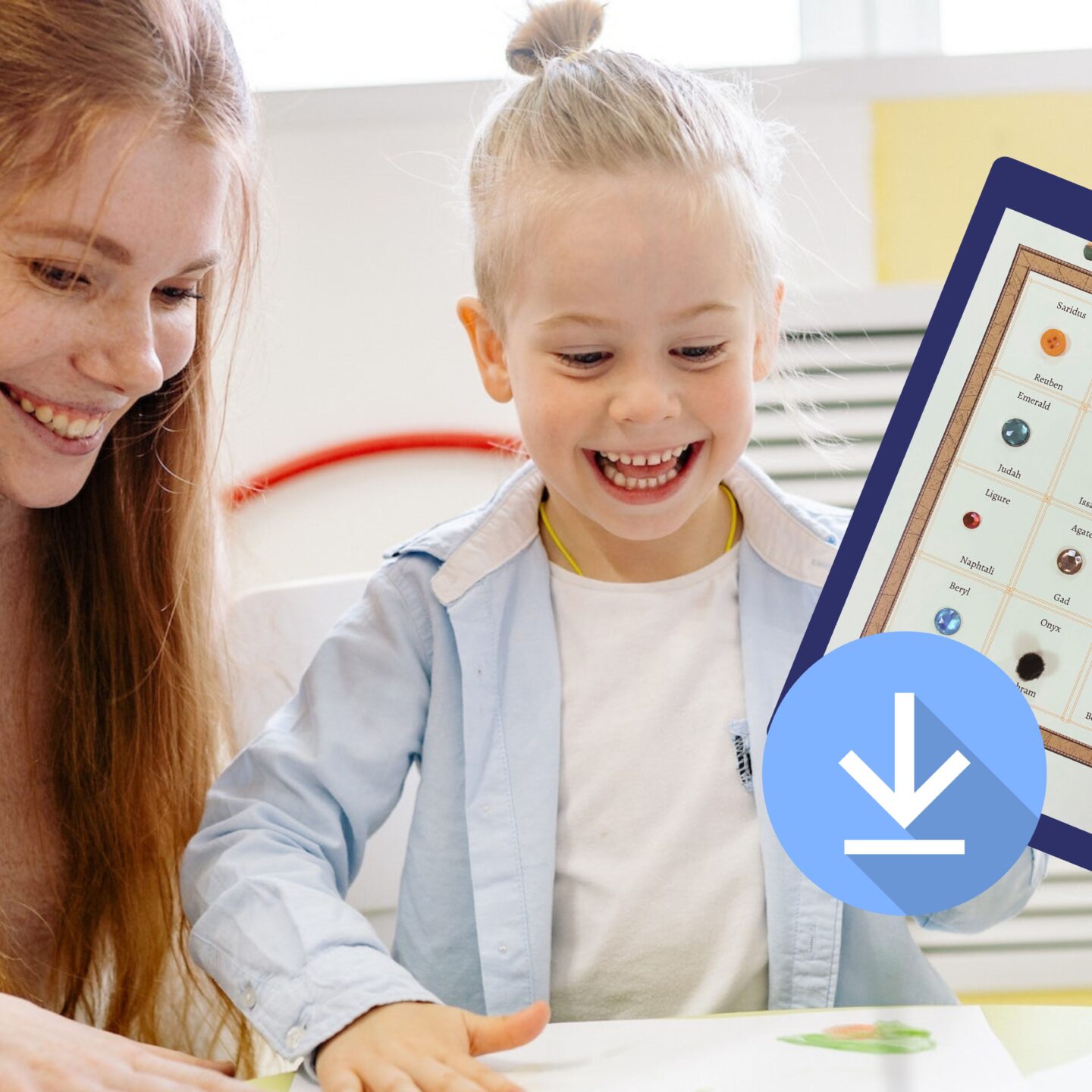If you’re looking for an elementary-age children’s lesson on Moses, look no further. We’re following the lectionary (year A, proper 21, the 18th Sunday after Pentecost). This is the first half of Moses’ story. We think you’ll love it!
Resources Needed:
- YouTube video: The Floor is Quicksand (so you can journey to Egypt through the tv)!
- Bible
- Whiteboard and markers for Family Tree or our free printable Family Tree
- YouTube video clips of The Prince of Egypt (links below)
- Moses skit (link below)
Recap and Intro to Moses’ Stories (5-10 minutes)
We’ve been journeying through Genesis over the past 3 weeks. I opened the Bible and held up the section of Genesis, so the kids could see the chunk of pages we’ve made it through. I reminded them we’ve been reading “origin” stories in Genesis—stories that tell us about our beginning. They recapped the stories and filled in the whiteboard family tree (Adam, Eve; Abraham, Sarah, Isaac, Rebecca, Esau, Jacob, Leah, and Rachel).
We remembered Jacob’s name being changed to Israel after wrestling with God. And the realization that we all are “Israel” and wrestle with God. We struggle between doing what we want and what God wants.
I let them know that Jacob had 12 sons: The 12 Tribes of Israel. And that God’s promise to Abraham was coming true. He was well on his way toward having many descendants.
I held up the Bible again showing the thickness of the book of Exodus (meaning “exit” or “rescue”). It’s all about Moses—about 50 stories worth. Their eyes widened upon hearing that 400 years passed between the stories of Genesis and Exodus. But before we get to this Moses children’s lesson, we must journey to Egypt.
Brain Break (5 minutes):
We journeyed to Egypt, explored tombs inside pyramids, and avoided snakes in this quick opportunity to let them move: The Floor is Quicksand.
Then we got back to the storytelling.
Telling the Moses Story (20 minutes)
Years Pass, Moses is Born
The new Pharaoh knew nothing of Joseph. All he knew is that there were so many Israelites, he started to get scared they might overthrow the Egyptians.
So, he made them slaves.
But it didn’t help. Their numbers were still increasing.
So, he decided to throw all the boy babies in the Nile and slow the Israelites’ multiplying a bit.
Jocabed (or Yah’-kuh-ved) threw her baby in herself—in a basket.
He floated down the Nile with his sister Miriam keeping watch. Unfortunately, he was headed straight toward Pharaoh’s palace.
Then we watched a video clip: the intro to The Prince of Egypt.
We continued with the storytelling.
Growing Up an Egyptian…er…Israelite…er Egyptian?
Fortunately, Pharaoh’s daughter saw. After some pleading, “Please, dad. Let me keep him. Just one won’t hurt anything,” dad said, “Okay.”
She named him Moses. Miriam offered to find an Israelite (the Egyptians—fand everyone else—called them Hebrews) to nurse him. Guess who Miriam brought?
Moses grew up in Pharaoh’s palace. He saw the Israelite slaves (and probably knew he was one). He stepped in to save one from being beaten and killed the slave driver.
The Burning Bush
Moses ran away. Years later this happened:
We watched the second clip: Moses and the burning bush, then continued the storytelling.
Moses was not excited about this new task God had for him. He asked, “What if Pharaoh doesn’t believe me? What if he doesn’t listen?”
God says, “I’ll be with you.” And shows him some miracles to prove it.
“Moses, throw down your staff.”
Moses does. It turns into a snake.
“Now pick it up by the tail.”
It turns back into a staff.
“Now put your hand in your pocket.”
Moses does.
“Now pull it out.”
His hand was diseased and full of leporosy.
“Put it back in.”
He does.
“Pull it back out.”
His hand is normal again.
But this doesn’t convince him.
“But, God, I don’t sp-p-peak well.”
So, God tells him to take his brother Aaron to speak for him.
And Moses does.
But Pharaoh doesn’t listen. Furthermore, he doubles the slaves’ work. Now the Israelites are mad at Moses, too.
The 10 Plagues
God tells him to go back and try again. Ten times. Then the last plague finally breaks Pharaoh’s hardened heart.
The video clip on all ten plagues might be a little much for the youngest set. Use your discretion.
So, Pharaoh finally lets the Israelite slaves go.
But it doesn’t last. He changes his mind. And sends his chariots after them.
I showed our last video clip: Crossing the Red Sea. The Israelites are finally FREE!
Whew! That was a lot.
Stations (30 minutes)
I usually have four stations set up between four different tables. Children can pick which table they want to work at. However, this week I had a skit available. So, I hauled out the racks of costumes, decked the stage with sprawling paper mountains, printed and hung a flock of sheep, and found a wooden staff. (You can print a similar skit here. But this modern twist over a gas stove in an appliance store looks hilarious—and still gets to the point about God trying to speak to us.)
Parts were chosen. Volunteers helped students pick out costumes and get dressed. And the tiniest, most shy little girl gave her best God voice—and had us in stitches!
So, there you have it—our Moses children’s lesson, part one. For the previous week’s lesson in the lectionary (year A), check out our post on Jacob’s famous death grip.
Stay tuned for our Moses children’s lesson , part two—all about the rules. Then, download our printable ephod craft and make name tassels—our most popular craft!
And remember, fellow Pioneer: No matter what territory you’re navigating, keep cultivating their seeds of faith! For real legacy.
Enjoy!



